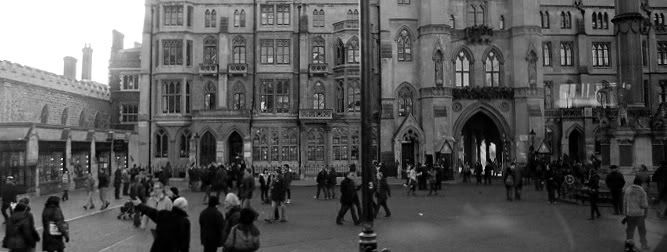Being in another country changes your perspective so much. When you go on vacation somewhere you see the sights and taste the foods, but when you actually live somewhere that is fundamentally different from everything that you know your entire view changes. Taking a trip to Italy you see the coliseum and the canals of Venice, you taste the pasta, pizza, and gelato, and you hear the people speak without understanding a word. It is all beautiful. But I’ve spent a month and a half here and already I begin to see those things that we miss as tourists. It’s a country filled with immigrants and poverty. There isn’t enough work and the government is struggling to repair itself and its people. The colors start to fade and blend until I can see a sort of grey film. This is what the artist for this week has depicted. Paolo Ventura, a Milanese photographer, had an exhibition at the ever-famous art fair. The works on display were from a collection called “behind the walls.†I found them interesting because of the mode in which everything was grey, but still hopeful. Sad, yet beautiful. Sad beauty is strangely one of my favorite themes in expression and in nature. Enough intro, this is one of his works.

Street music is, as Willy Wonka said, “…a good deed in a weary world†and that is what I think when I see the works of this artist. The people are placed in this tired grey world, but still they work hard and create something so beautiful. And in another work Mr. Ventura shows how nature and man can coexist.

Though the tree has lost its leaves for the greyness of the coming winter, it lives still within the city walls, which in a place like Bologna I’ve learned is something very rare. I’ve never felt so far from trees before, coming from Michigan. And the man holds a bird in his hand, as if it just landed there by itself. At first glance the picture seems be rainy and glum, but looking deeper you see the light of the caffe’ escaping into the street, lighting up the man and his companion. The use of light and shadow in this man’s work is wonderful. He has mastered the use of city light, which is simultaneously bright and dreary.

It is so beautiful to learn about a culture through its developing artists. I’ve studied the artists from the past and have learned about their culture. Now though, seeing artworks like these and researching them further, I am seeing things about life here that these artists are trying to make statements about. I’m excited to continue writing about the art here. Hopefully soon I’ll have some classical art for you. Maybe I’ll check out a museum this week!
Ciao ciao!
Danny Fob
Your Wolverine Abroad Blogger




